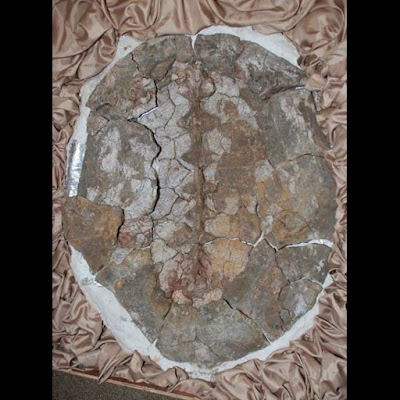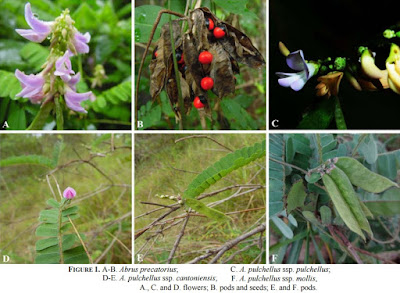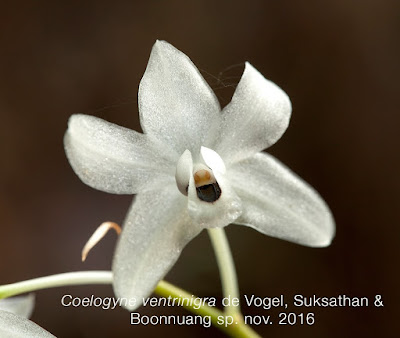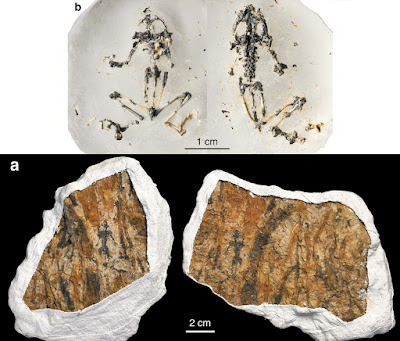[Most Recent Entries] [Calendar View]
Thursday, October 27th, 2016
| Time | Event | ||||
| 12:44a | [Paleontology • 2009] Basilochelys macrobios 'เต่าทรงพระเจริญ' • A Large Cryptodiran Turtle from the Phu Kradung Formation (latest Jurassic-earliest Cretaceous) of the Khorat Plateau, Northeastern Thailand Abstract A large cryptodiran turtle, Basilochelys macrobios n. gen. n. sp. is described from the latest Jurassic–earliest Cretaceous Phu Kradung Formation of NE Thailand, on the basis of skull, shell and other postcranial elements. Basilochelys presents a combination of primitive and derived characters. The derived characters include sculptured skull roof and shell surface; deeply embedded canalis caroticus internus; foramen posterius canalis carotici interni completely surrounded by pterygoid; neural formula of 6 > 4 < 6 < 6 < 6 < 6; anteroposteriorly expanded eleventh and twelfth marginal scutes extending onto the suprapygal and costal plates; narrow vertebral scutes; plastron sutured to the carapace, with large and wide anterior and posterior lobes, long and narrow bridge, very narrow axillary and inguinal notch; wide entoplastron; humeropectoral sulcus located on the posterior part of the entoplastron; anal notch absent. This taxon is placed in Trionychoidae and considered as the most basal member of that group. Systematic palaeontology Megaorder Cryptodira Cope Parvorder Eucryptodira Gaffney Epifamily Trionychoidae Fitzinger (fide Meylan & Gaffney 1989) Genus Basilochelys new genus Type species. Basilochelys macrobios sp. nov. Etymology. Basileus: Greek, king; chelys: Greek, turtle. In honour of His Majesty King Bhumibol of Thailand; Macrobios: Greek, long life. In honour of His Majesty King Rama IX’s eightieth birthday. Holotype. A nearly complete carapace articulated with a partial plastron, pelvic girdle and a cervical vertebra (MD8-2, collection of the Sirindhorn Museum, Phu Kum Khao, Sahatsakhan, Kalasin Province, Thailand). Type locality. Kham Phok, Mukdahan Province, Khorat Plateau, NE Thailand. Horizon. Phu Kradung Formation, terminal Jurassic–basal Cretaceous. Conclusion: The large turtles from the terminal Jurassic–earliest Cretaceous Phu Kradung Formation of the Khorat Group, NE Thailand, described herein represent anew genus and new species of Eucryptodira, Basilochelys macrobios n. gen. n. sp. This taxon is placed in Trionychoidae and considered as the most basal member of that group. The combination of primitive and derived characters of Basilochelys suggests that the group Trionychoidae may have originated from xinjiangchelyids and their close relatives. Siamochelys from the Middle Jurassic of the southern peninsula of Thailand may represent the sister taxon of Trionychoidae, because of its ligamentous carapace–plastron attachment, sculptured shell surface and wide entoplastron. These new discoveries add significantly to the still poorly known turtle fauna from the Late Jurassic–Early Cretaceous of SE Asia and provide important information about the origin and early evolution of modern cryptodiran turtles. Haiyan Tong, Julien Claude, Wilailuck Naksri, Varavudh Suteethorn, Eric Buffetaut, Sasidhorn Khansubha, Kamonrak Wongko and Phisit Yuangdetkla. 2009. Basilochelys macrobios n. gen. and n. sp., A Large Cryptodiran Turtle from the Phu Kradung Formation (latest Jurassic-earliest Cretaceous) of the Khorat Plateau, NE Thailand. In: Buffetaut, E.; Cuny, G.; Le Loeuff, J. & Suteethorn, V. (eds.). Late Palaeozoic and Mesozoic Ecosystems in SE Asia. Geological Society, London, Special Publications. 315: 229-243. DOI: 10.1144/SP315.12 academia.edu/1223468/Basilochelys_macrobios_n._gen._and_n._sp._a_large_cryptodiran_ researchgate.net/publication/237965988_Basilochelys_macrobios_n._gen._and_n._sp._a_large_cryptodiran_  เต่าทรงพระเจริญ Basilochelys macrobios n. gen. and n. sp., a large cryptodiran turtle from the Phu Kradung Formation ซึ่งผู้ศึกษาตั้งใจให้ชื่อเพื่อ เฉลิมพระเกียรติพระบาทสมเด็จพระปรมินทรมหา ต้นตระกูลเต่าน้ำจืดชนิดใหม่โลก อายุ150ล้านปี แถมพบกระดูกไดโนเสาร์"ซอโรพอด"สมบูรณ์สุดใ อธิบดีกรมทรัพยากรธรณี ยังเปิดเผยถึงการค้นพบฟอสซิลของสัตว์โบราณ | ||||
| 12:48a | [Botany • 2016] The Genus Abrus Adans. (Leguminosae-Papilionoideae) in Thailand
Abstract Two species and four taxa of the genus Abrus Adans. are found in Thailand viz. Abrus precatorius, A. pulchellus ssp. pulchellus, A. pulchellus ssp. cantoniensis and A. pulchellus ssp. mollis. Keys to species and subspecies are provided. Micromorphology of leaf surface and pollen were prepared by peeling and acetolysis methods, respectively. The leaf surface characteristics are used to construct a key. Pollen of Abrus is monad, isopolar, radial symmetry and tricolporate apertures. KEY WORDS: Abreae, Leaf surface, Pollen, Revision Wanniga Munsuk, Pranom Chantaranothai and Boonsong Kongsook. 2016. The Genus Abrus Adans. (Leguminosae-Papilionoideae) in Thailand. Tropical Natural History 16(2); 67-77. | ||||
| 1:28a | [Botany • 2016] Coelogyne ventrinigra | เอื้องนางพญาลิ้นดำ • A New Species (Orchidaceae) from Thailand
ABSTRACT Coelogyne ventrinigra, a new species from Umphang District, Tak Province, in the western part of Thailand, is described and illustrated. KEYWORDS: Elatae; Conservation status Etymology.— The epithet ventrinigra means ‘black belly’, from the Latin venter (belly), and nigra (black), referring to the blackish spots abaxially on the lip. Vernacular.— Ueang nang phaya lin dam (เอื้องนางพญาลิ้นดำ). กล้วยไม้ชนิดใหม่ของโลก ที่เพิ่งได้รับการตีพิมพ์เมื่อไม่กี่วันมา . เราเจอกล้วยไม้ชนิดนี้ในช่วงเวลาที่สมเด็จ . ผมภูมิใจกับการค้นพบกล้วยไม้ไทยเสมอ ๆ ทว่าความภูมิใจใด ๆ หากแลกกับปาฎิหารย์แห่งชีวิตของพระองค์ท่า . ขอบคุณทุกท่านที่ช่วยเหลือจนกล้วยไม้ชนิดน ขอบคุณนักพฤกษศาสตร์ ดร.ปิยเกษตร สุขสถาน และ ดร.สันติ วัฒฐานะ ครับที่จัดทำคำบรรยายและศึกษาเพิ่มเติม . ขอบคุณครอบครัวของผมที่ยอมทุกอย่างในการเด นี่เป็นภาพที่ผมถ่ายตอนที่พบเป็นครั้งแรกเ Ed de Vogle, Piyakaset Suksathan, Thitiporn Pingyot, Hassachai Boonuang and Santi Watthana. 2016. Coelogyne ventrinigra (Orchidaceae), A New Species from Thailand. Thai For. Bull. 44(1); 49-52. https://www.tci-thaijo.org/index.php/Tha | ||||
| 4:12p | [Paleontology • 2016] Prospea holoserisc • A Burrowing Frog from the late Paleocene of Mongolia Uncovers A Deep History of Spadefoot Toads (Pelobatoidea) in East Asia
Abstract Fossils are indispensible in understanding the evolutionary origins of the modern fauna. Crown-group spadefoot toads (Anura: Pelobatoidea) are the best-known fossorial frog clade to inhabit arid environments, with species utilizing a characteristic bony spade on their foot for burrowing. Endemic to the Northern Hemisphere, they are distributed across the Holarctic except East Asia. Here we report a rare fossil of a crown-group spadefoot toad from the late Paleocene of Mongolia. The phylogenetic analysis using both morphological and molecular information recovered this Asian fossil inside the modern North American pelobatoid clade Scaphiopodidae. The presence of a spade and the phylogenetic position of the new fossil frog strongly support its burrowing behavior. The late Paleocene age and other information suggestive of a mild climate cast doubt on the conventional assertion that burrowing evolved as an adaptation to aridity in spadefoot toads. Temporally and geographically, the new fossil provides the earliest record of Scaphiopodidae worldwide, and the only member of the group in Asia. Quantitative biogeographic analysis suggests that Scaphiopodidae, despite originating in North America, dispersed into East Asia via Beringia in the Early Cenozoic. The absence of spadefoot toads in East Asia today is a result of extinction. Systematic Paleontology Amphibia Linnaeus, 1758. Anura Rafinesque, 1815. Pelobatoidea Bolkay, 1919. Scaphiopodidae Cope, 1865. Prospea holoserisca gen. et sp. nov. Etymology: Prospea means “before the North American spadefoot toad Spea”, and holoserisca means “silk”, referring to its discovery on the ancient Silk Road. Holotype: IGM 2/001 (Institute of Geology, Mongolia, Ulanbaatar, Mongolia), a nearly complete specimen preserved as part and counterpart in grey sandy clay (Fig. 1a). The rock matrix was later removed and the specimen was embedded in resin (Fig. 1b; see the Supplementary Experimental Procedures: fossil preparation). The two halves of the holotype were combined digitally to reconstruct the whole skeleton (Fig. 2; Supplementary Movie S1). Jianye Chen, Gaberiel S. Bever, Hong-Yu Yi and Mark A. Norell. 2016. A Burrowing Frog from the late Paleocene of Mongolia Uncovers A Deep History of Spadefoot Toads (Pelobatoidea) in East Asia. Scientific Reports. 6, 19209. DOI: 10.1038/srep19209 |
| << Previous Day |
2016/10/27 [Calendar] |
Next Day >> |
















